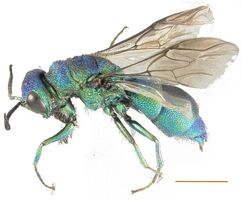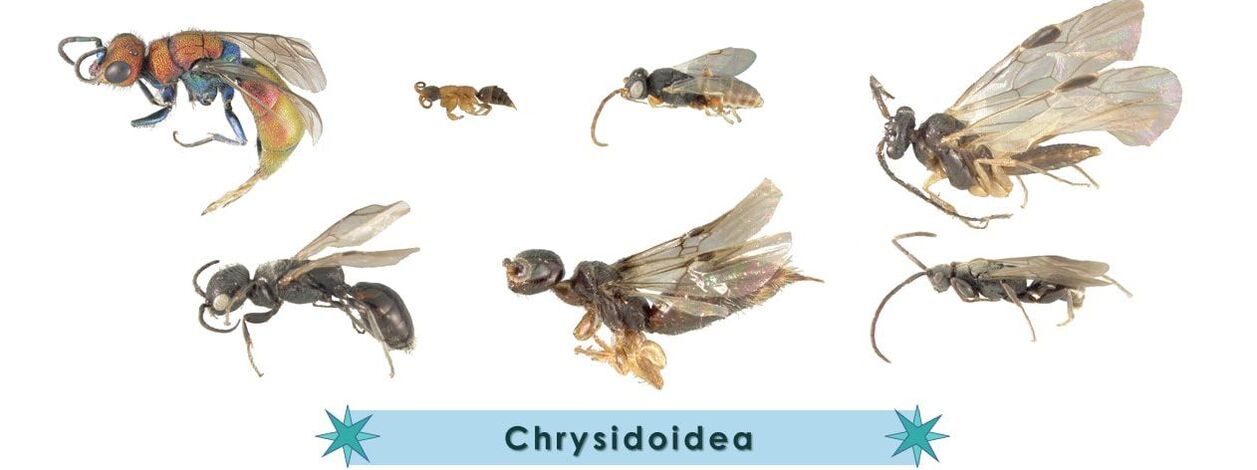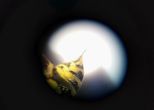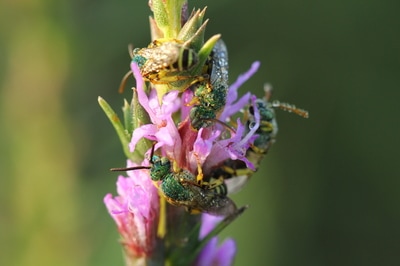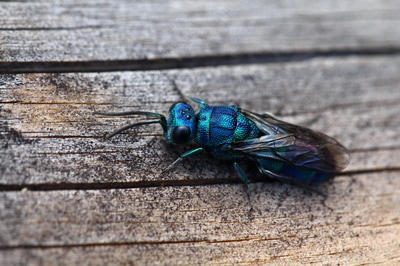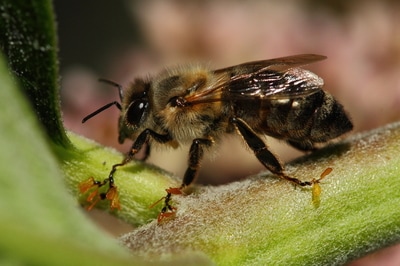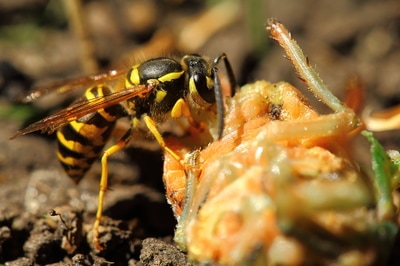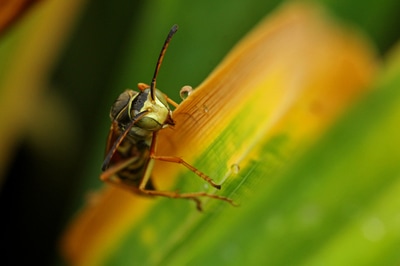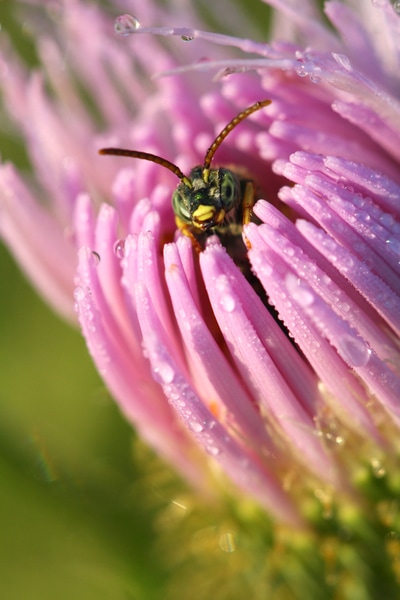Nothing in Evolution makes sense except in the light of phylogeny |
Sterelny & Griffiths |
National Museum of Natural History, Smithsonian (Washington, DC)
|
Peter Buck Postdoctoral Fellowship
From August 2018 until January 2020, I was a postdoc at the NMNH. They have the largest insect collection in the world and a huge molecular lab! Chrysidoidea is one of the least-known superfamilies of Aculeata (the stinging ants, bees, & wasps). Though Chrysidoidea has been treated phylogenetically using a dataset of morphological characters, there has not yet been a molecular phylogenetic analysis that has included a representative from all extant families. Though all seven families are found either worldwide or on multiple continents, many species are small, parasitize concealed hosts, and are rarely collected. I'm using museum specimens from lots of institutions so that I can include broad geographic and taxonomic sampling for a phylogenomic analysis.
|
Previous postdoc: Cornell University
For my postdoc at Cornell (June 2016 - Aug 2017 & Jan 1018 - July 2018), I worked on the phylogenomics and evolution of Aculeata (the stinging Hymenoptera; ants, bees, and wasps). For phylogenetic reconstruction, we are utilizing thousands of highly-conserved, phylogenetically-informative regions of DNA across the genome -- ultraconserved elements (UCEs). Next-generation sequencing techniques are effective for utilizing fragmented DNA from old, pinned museum specimens (we are using the Illumina HiSeq 4000 at NovoGene).
The photo at the very top was taken during UCE library prep steps done at the Smithsonian, in the excellent LAB facilities (Laboratory of Analytical Biology).
My labmate and I traveled to DC for training in 2016. Thanks to Seán Brady and Bonnie Blaimer for hosting us!
For my postdoc at Cornell (June 2016 - Aug 2017 & Jan 1018 - July 2018), I worked on the phylogenomics and evolution of Aculeata (the stinging Hymenoptera; ants, bees, and wasps). For phylogenetic reconstruction, we are utilizing thousands of highly-conserved, phylogenetically-informative regions of DNA across the genome -- ultraconserved elements (UCEs). Next-generation sequencing techniques are effective for utilizing fragmented DNA from old, pinned museum specimens (we are using the Illumina HiSeq 4000 at NovoGene).
The photo at the very top was taken during UCE library prep steps done at the Smithsonian, in the excellent LAB facilities (Laboratory of Analytical Biology).
My labmate and I traveled to DC for training in 2016. Thanks to Seán Brady and Bonnie Blaimer for hosting us!
From the Danforth lab website: The lab has recently embarked on a new collaborative project on the phylogeny of the aculeate wasps and bees using ultraconserved elements (UCEs). This project involves a collaboration with Sean Brady (Smithsonian Institution), James Pitts (Utah State University), and Robert Ross (Paleontological Research Institution). The project is entitled “Phylogeny and diversification of the stinging Hymenoptera (Aculeata) using targeted enrichment of ultra conserved elements” (NSF-DEB 1555905).
One universal feature of life on earth is that diversification rates vary widely among lineages and over time. Key innovations, such as changes in life history, may be one explanation for dramatic shifts in diversification. In insects, shifts in diet, sociality, and mode of parasitism have all been implicated in diversification rate shifts. Few lineages of insects include species that exhibit all of these life history traits, making it difficult to compare the impact of these factors on diversification within a closely related group of organisms. The ants, wasps and bees (Aculeata) represent one such lineage because aculeate species exhibit a diversity of life histories and multiple shifts in life history. This project will focus on reconstructing the evolutionary relationships among the 65,000 described aculeate species using novel methods of high-throughput, genomic-scale sequencing. These results will provide important insights into the evolution and diversification of the most sophisticated social organisms on earth (the ants, vespid wasps [hornets and yellow jackets], and corbiculate bees [including honey bees and bumblebees]) and the most economically important lineage of pollinating insects (the bees).
We will take advantage of new technological innovations in DNA sequencing to generate massive data sets for resolving aculeate relationships. Using highly conserved regions of the genome (ultraconserved elements, or UCEs) we will enrich genomic libraries for genes of interest. These enriched libraries will then be sequenced using the Illumina Hi-Seq platform. Using bioinformatics tools, the data sets will be assembled, aligned, and analyzed in order to reconstruct the evolutionary relationships among aculeate taxa and determine where and when shifts in diversification took place. This project will contribute significantly to the development of scientific expertise and improved infrastructure in the United States. This research will provide training opportunities for undergraduate students, graduate students, and post-doctoral researchers in sophisticated methods of DNA sequencing, bioinformatics, computer programming, and phylogenetic analysis. The data generated will be made publicly available through Genbank, TreeBase, Dryad, and the Encyclopedia of Life webpages. Protocols developed as part of the project will be made widely available to others researchers interested in applying these methods. Finally, in collaboration with the Paleontological Research Institution, the project will lead to the development of a 600 square foot traveling public exhibit on the biodiversity, evolutionary history, and importance of our most important agricultural pollinators, the bees.
One universal feature of life on earth is that diversification rates vary widely among lineages and over time. Key innovations, such as changes in life history, may be one explanation for dramatic shifts in diversification. In insects, shifts in diet, sociality, and mode of parasitism have all been implicated in diversification rate shifts. Few lineages of insects include species that exhibit all of these life history traits, making it difficult to compare the impact of these factors on diversification within a closely related group of organisms. The ants, wasps and bees (Aculeata) represent one such lineage because aculeate species exhibit a diversity of life histories and multiple shifts in life history. This project will focus on reconstructing the evolutionary relationships among the 65,000 described aculeate species using novel methods of high-throughput, genomic-scale sequencing. These results will provide important insights into the evolution and diversification of the most sophisticated social organisms on earth (the ants, vespid wasps [hornets and yellow jackets], and corbiculate bees [including honey bees and bumblebees]) and the most economically important lineage of pollinating insects (the bees).
We will take advantage of new technological innovations in DNA sequencing to generate massive data sets for resolving aculeate relationships. Using highly conserved regions of the genome (ultraconserved elements, or UCEs) we will enrich genomic libraries for genes of interest. These enriched libraries will then be sequenced using the Illumina Hi-Seq platform. Using bioinformatics tools, the data sets will be assembled, aligned, and analyzed in order to reconstruct the evolutionary relationships among aculeate taxa and determine where and when shifts in diversification took place. This project will contribute significantly to the development of scientific expertise and improved infrastructure in the United States. This research will provide training opportunities for undergraduate students, graduate students, and post-doctoral researchers in sophisticated methods of DNA sequencing, bioinformatics, computer programming, and phylogenetic analysis. The data generated will be made publicly available through Genbank, TreeBase, Dryad, and the Encyclopedia of Life webpages. Protocols developed as part of the project will be made widely available to others researchers interested in applying these methods. Finally, in collaboration with the Paleontological Research Institution, the project will lead to the development of a 600 square foot traveling public exhibit on the biodiversity, evolutionary history, and importance of our most important agricultural pollinators, the bees.
Images copyright Andrew Murray (my brother).
